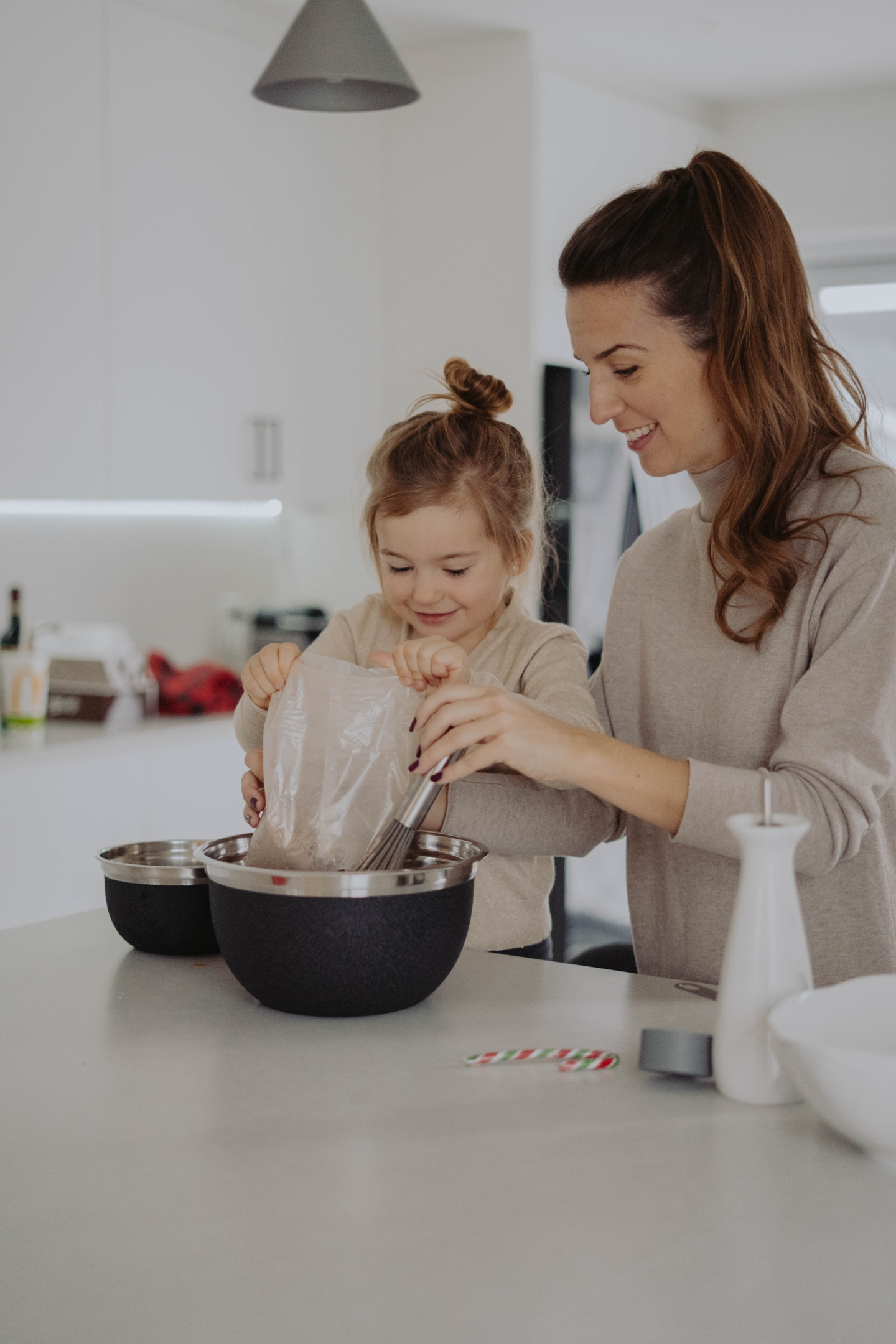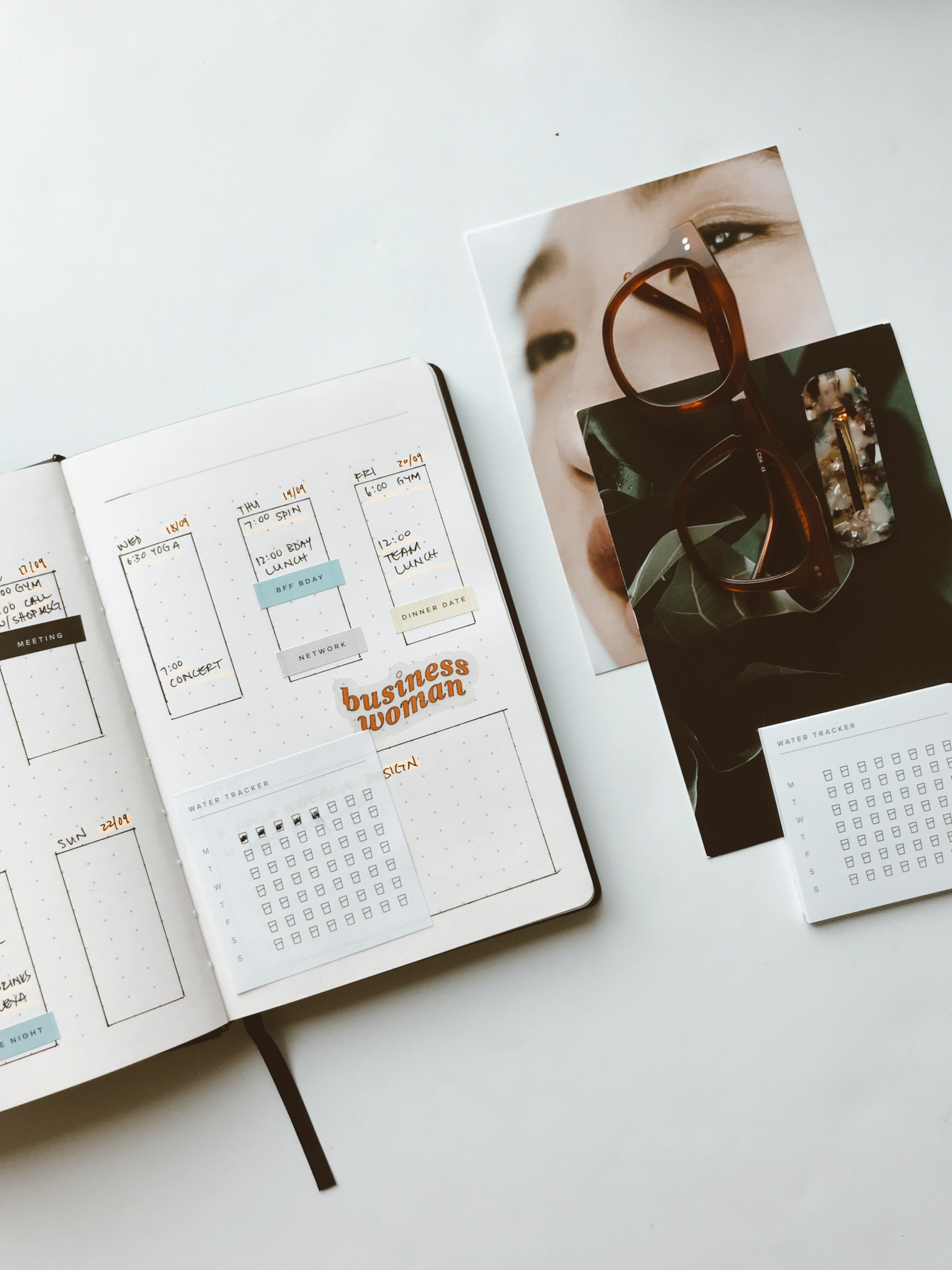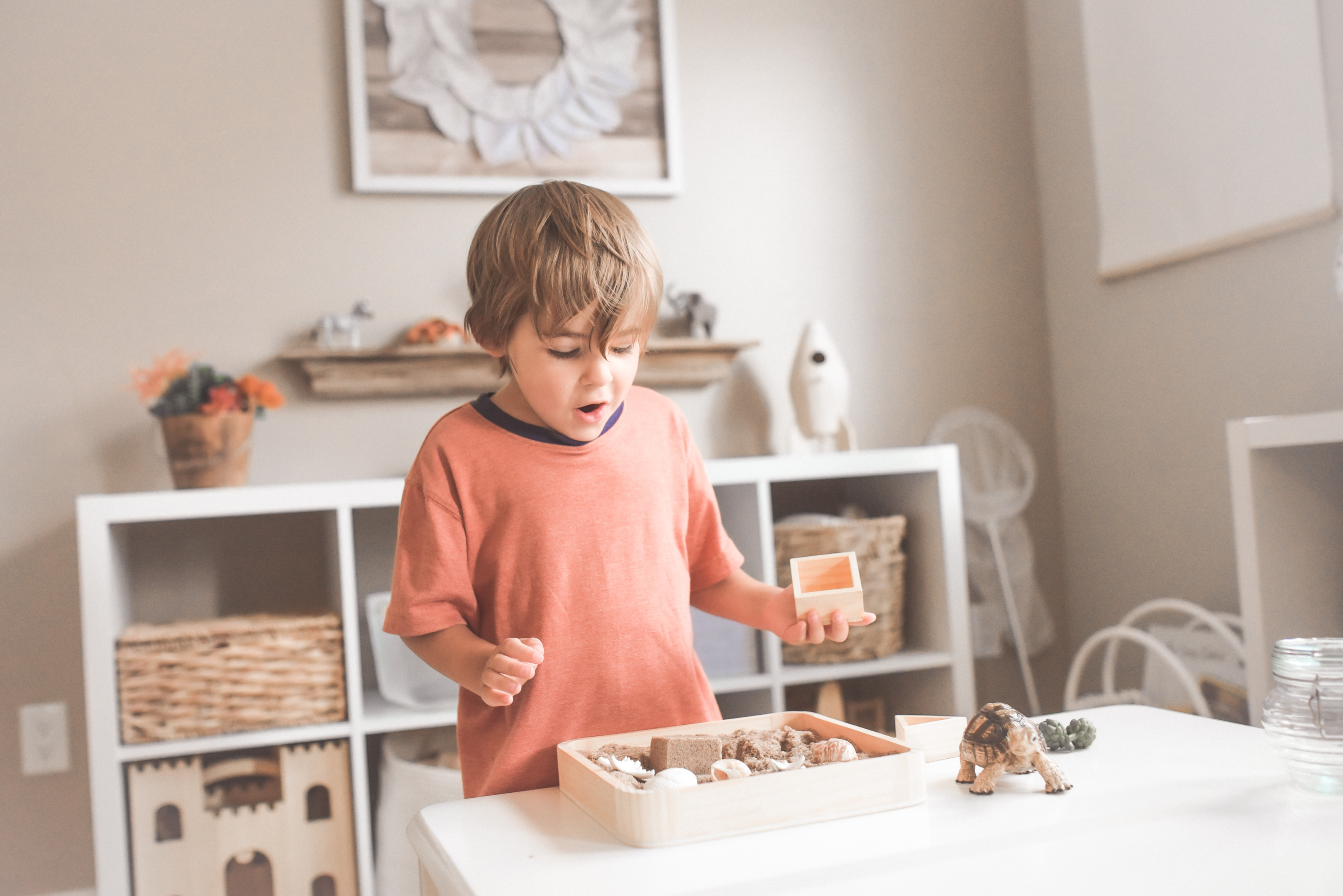6 Ways to Build Resilience for Back to School Season feat. Psychologist Mallory Beaker
Practicing Positive Psychology and Building Resilience With Psychologist Mallory Becker
Mallory Becker is a psychologist from who makes her sessions feel like you are talking to a friend. We were drawn to her welcoming personality and appreciated how she gets down to the point and shares an abundant amount of proven strategies to help reach personal growth.
We reached out to her after finding her business page on Instagram, and being greeted with an array of positive messages about anxiety, mood, resilience, relationships and parenthood. A post of hers that caught our eye, in particular, was an image of a roadway, and on in "resilience" was written in chalk. She followed the picture by a definition of resilience, and some tried and true ways to build resilience, derived from the recommendation of the American Psychological Association:
- " Make connections. Good relationships with close family members, friends or others are important. Accepting help and support from those who care about you and will listen to you helps strengthen resilience.
- Avoiding seeing crises as insurmountable problems. You can't change the fact that highly stressful events happen, but you can change how you interpret and respond to these events. Try looking beyond the present to have future circumstances may be a little better.
- Accept that change is a part of living. Certain goals may no longer be attainable as a result of adverse situations. Accepting circumstances that cannot be changed can help you focus on circumstances that you can alter.
- Move towards your goals. Develop some realistic goals. Do you something regularly, even if it seems like a small accomplishment, that enables you to move forward toward your goals.
- Take decisive action. Act on adverse situations as much as you can. Take decisive action rather than detaching completely from problems and stressors and wishing they would just go away.
- Nurture a positive view of yourself. Developing confidence in your ability to solve problems in trusting your instincts helps build resilience.
- Keep things in perspective. Even when facing very painful events, try to consider the stressful situation in a broader context and keep a long-term perspective.
- Maintain a hopeful outlook. An optimistic outlook enables you to expect that good things will happen in your life. Try visualizing what you want rather than worrying about what you fear.
- Take care of yourself. Pay attention to your own needs and feelings. Engage in activities that you enjoy and find relaxing. Exercise regularly. Taking care of yourself helps to keep your mind and body primed to deal with situations that require resilience."
We greatly appreciated how eager Mallory was to set up an interview with us! We enjoyed asking her more about building resilience, especially in the unique situation of raising children during a global pandemic. When talking about the turbulent times of our health crises, she shared six life-changing tips to practice positive psychology and help build resilience in ourselves and the children in our lives.
We are thrilled we get the chance to share some of her professional strategies with you - and some that we found ourselves - and we hope they help you through the new back-to-school season and continuous shifts in life we are making to keep everyone safe and healthy.
Expect anxiety and stress to arise and have some tools for everyone in your family. My favourite quote is from Benjamin Franklin: “An ounce of prevention is worth a pound of cure.”
Positive Psychology vs Positive Thinking
Positive thinking
Positive thinking can relieve one's stress by helping them reframe cognitions and look at the benefits of a situation rather than the negatives. It can involve:
- Optimism
- Gratitude
- Supportiveness
- Positive affirmations
The goal is to be more aware of your conditions in order to create more positive emotions.
Positive psychology
Positive psychology builds on the concept of positive thinking and helps individuals focus on the positive events in their life, including states like resilience. Focusing on positive thinking, positive psychology looks at behaviors that lead to more positive emotions, helping people cope with stress and build resilience. By focusing on strengths instead of weaknesses, we can build up the positive in our lives, rather than focusing on the negative. This psychological lens looks at how gratitude, pleasures, optimism, and gratification play a role in people's lives for stress relief.
How do you know when you have resilience?
Resilience is hard to grasp and it's one of those things that flows up and down with time. Psychologists tend to define it as adapting well in the face of adversity, trauma, tragedy, threats or significant sources of stress. Times like a global pandemic definitely relate to these turbulent times, where psychological resilience and positive thinking come to be more important than ever.
We decided to write this blog as we have become aware of our own need to grow resilience as well as realizing others I've had to make hard decisions affecting their family but you can take a toll on their self-esteem.
Being a resilient person definitely doesn't mean you won't have feelings of distress difficulty or sadness I mean through those times of heightened emotional pain and stress, people have utilized techniques to help them grow rather than lose hope.
To those who have a sense of feeling lost and hopeless, it doesn't mean you're not resilient either. Even the most resilient people can only handle so much, so we wanted to share strategies that may be new to you to help you build resilience skills. If you are feeling strong emotions of hopelessness, please scroll down to the bottom of this blog for a list of numbers to call or text for support.
As we mentioned, resilience looks different for all of us, but we were curious to explore some of the most common attributes of resilient people. Here are some telltale signs that you have currently fostered great resilience skills:
You are self-aware
You are aware of what works best for you and the tools around you so you can cope with your problems in a healthy way. You know your warning signs, your skills, what can make you emotional, and what can harm your positive thinking. Being self-aware is being aware of your thoughts and perceptions, and understand the role they have in your life and to others. Not only that, but you know how they influence your actions and the decisions you make.
This trait is a strong component of resilient individuals, as it allows you to correct yourself when mistakes are made and understand the root of them so you can learn and be more resilient in the future. You can understand what you uniquely need as a person and what you need help on to become mentally strong and healthy.
You believe in yourself
If you're someone who has killer confidence and tries to maintain a positive self-image and it's likely that you are a resilient individual. Studies have shown that positive self-esteem has been linked to higher resilience and life satisfaction.
In this state, your achievements and failures do not equate to your feelings of self-worth, rather, your self-worth comes from within and not from external sources, like comparing yourself to others. If you agree with the phrase that you believe in yourself and you are happy with who you, odds are you have good self-esteem, which definitely contributes to your level of psychological resilience.
What is unpredictable doesn't scare you
This year more than ever we realized the strength of how nothing is certain to stay the same. Although it is completely normal to have thoughts of doubt with changing times, resilience can also shine through during these moments. If you are able to remain a positive thinker through moments of uncertainty, it's a good sign that you're probably pretty resilient.
Resilient individuals tend to know that there's no way to predict what life has in store, so they don't focus on one outcome too much and know that everything has the possibility of changing (which may not be a bad thing!). These moments bring out your adaptability and show how resilient you are based on how you can let go of control.
The positives stand out more than the negatives
This is exactly what positive thinking has to do with resilience. With learning lessons sometimes come pain, and those situations will never be 100% positive. But, the sign of a resilient person is that they can see the silver linings and understand the constructive lessons from these moments. If you actively try to embrace feeling positive emotions to learn and grow, even after something negative has happened, this is a great sight that you are a resilient person.

How positive psychology fosters resilience
It helps us focus on solutions
By reframing problems into opportunities, we leverage positive psychology to develop a sense of control in our life, rather than feeling like we have a barrier that we can not overcome. Each time we are able to think about our strengths and focus on solutions, our motivation, and level of resilience are heightened.
It allows us to follow our passions
Resilience also comes from being in tune with our values and seeing how they bring purpose and passion to our lives. By aligning our goals to our values, we can use the excitement and drive from our true passion in life to motivating us to grow, learn and expand, which are essential to building resilience. When you are putting your life towards something you completely believe in, there is a great amount of confidence and self-love that can arise.
It builds our gratitude
Realizing the positive things in our life, and how special they are, can help us express gratitude towards them. When you develop mindful thankfulness for the positive things you have in life, it is easier to draw your attention away from the more unpleasant aspects of life, which will always be there in one way or another.
Building resilience in your children
We can also help those around us grow resilience, and especially as parents or caregivers, we can play a critical role in a child's development of resilience. It is found that resilience-building starts at a young age, and more resilient children tend to be raised within a home that has at least one warm and sensitive caregiver. This caregiver tends to exhibit a great amount of mindfulness when teaching their kid about consequences and making mistakes. Because of this, authoritative parenting styles rather than authoritarian or passive parenting styles are found to grow more resilient children. Here is a bit of background for you on these different parenting styles and techniques to practicing them yourself:
Authoritative parenting
Authoritative parenting includes being warm and sensitive, while also setting limits and reasoning to guide your children. In this parenting type, positive reinforcement is often used, avoiding threats or punishments to teach children.
Authoritative parents expect maturity and cooperation from their, kids while also offering them lots of emotional support, and while being nurturing they still take a firm stance when the kids behave responsibly.
Instead of using harsh punishments and shaming their children, they listen to their children's concerns and talk about their mistakes. They approach misbehaving actions with open and honest 2-way conversation to help children figure out what went wrong, and explain the consequences of such actions. Children raised by authoritative parents are more likely to become:
- Independent
- Self-reliant
- Academically successful
- Well-behave
- Less likely to have anxiety
- Have higher resilience
Authoritative parents tend to agree with the following statements:
- I encourage my child to talk about their feelings with me and other
- I help my child to the best of my ability when they are feeling upset or scared
- I let me child know the reasoning behind the expectations and rules I have for them
- I encourage my child to share their own unique opinion, even if its different from my own
- I take my child's feelings into consideration before I make decisions that impact them
Authoritarian parenting
Authoritarian parents have very high expectations of the children, but provide very little constructive feedback and nurturing. When children make mistakes it's often very negative and they tend to be punished harshly including yelling and corporal punishment.
These children tend to not be encouraged to explore and act independently, so it's difficult for them to determine their own limits and personal standards when they grow up.
Passive parenting
Passive parents tend to have less of a role in implementing rules and boundaries for their children. This often is shown through lack of discipline or letting children do what they want.
Kids who grow up in permissive homes tend to believe that rules do not apply to them, but they may also have better self-esteem and less anxiety.
Studies have demonstrated that the type of relationship and parenting a child grows up with can significantly influence their psychological resilience. Characters of resilient children are also linked with improved:
- Cognitive skills
- Problem-solving abilities
- Self-regulation
- Adaptability to stress
- Positive self-image
- Positive outlook
Resilience can be cultivated in anyone
Although, even if you were not raised to nurture resilience, or want to implement more resilience training in your children at a later age, it does not mean psychological resilience is not achievable. We are going to discuss the ways that you can build resilience, no matter what stage in life you are. To do this, we are passing the mic to Mallory, who has a great amount of expertise with positive psychology and has a ton of tips on how we can build resilience.
Mallory’s 6 tips to building resilience:
1. Listen to the signs that you (or those around you) may need some more self-care time.
"Signs are different for everyone as some tend to over-function and others under function, however, some common signs are:
How they are feeling
- Irritable, aggressive, impatient or wound up
- Overwhelmed or feeling like you have nothing left to give
- Anxious, nervous or afraid
- Difficulty stopping thoughts
- Unable to enjoy yourself
- Like you've lost your sense of humour
- A sense of dread
How they are acting
- Finding it hard to make decisions
- Constantly worrying
- Avoiding situations that are troubling you
- Snapping at people
- Difficulties concentrating
- Eating too much or too little
- Restless, like you can't sit still
- Being tearful or crying
The other important thing to remember is having open discussions about mental health. Communication for the whole family can include checking in every few days to discuss what “emotional zone” you are in.
Green zone means = I’m good
Yellow zone = a few things are off with me
Red zone = I’m struggling
You can also discuss proactively what are some signs for every member of the family, as this may change person to person."
This first strategy from Mallory is reflective of the self-awareness that develops into resilience. The first step is to can help you understand the emotions of you and those around you, creating a level of self-awareness. This exercise also gives a great chance to help those around you to take note of their feelings, and give you an opportunity to offer them support in the way they need it without them necessarily having to ask.
Outlining the emotional zone you are in is a great way to express your emotions without directly naming them, and assessing, in general, your overall mood. To build on this insight, another great exercise out there is to specifically name your emotions to yourself as you feel them, categorizing them as red, yellow or green if that serves you.
It is helpful to start this exercise by picking a familiar emotion that is easy to name, like happiness. Once you determine the emotion you want to focus on, become aware of how many times you feel it throughout the day, and the scenario or environment that brings it on.
Journalling is a great tool to help support tracking your emotions, instead of keeping it on your head. This way, you reflect back about what you were feeling and what was happening at that moment, giving you a chance to think about how your emotions arise.
Writing these valuable thoughts down (or even keeping a voice or note memo on your phone) can help you look back and think about how you can reframe any negative thoughts that may arise. This can also help you become more aware of the situation and context in which negative emotions occur, so you know when you are going into those situations that you may need to turn on your positive psychology techniques even more.
2. Practice useful activities or methods to utilize when we notice anxiety start to rise.
"Everyone has different things they need to rejuvenate. Decreasing anxiety in the yellow zone is much easier than waiting for the red zone. Typically, it helps to:
- Decrease stressors
- Simplify life and demands
- Increase low energy enjoyable tasks such as time in nature, hobbies, reading books
- Say "no" to reduce anxiety and burnout
- If anxiety is persistent, working with a psychologist or a school counsellor can also be helpful."

Knowing easy-to-practice ways to reduce anxiety can help you build that everyday resilience. Once you know the signs that you are getting overwhelmed or feel that added anxiety in your day-to-day life, you can implement the strategies that you have learned to work best. Even if you are going into one of those situations that tend to bring up negative emotions, using these techniques beforehand could significantly impact your thoughts and build your resilience.
Finding the techniques that work best for you, takes some time and practice, but can be greatly supported by developing a sense of self-awareness. As mentioned, journaling is a great tool to achieve this! Another way to find what works best for you is trying some popular techniques that work for others, and seeing if any of them help you too. Some of the following techniques are common go-to anxiety relievers:
Getting physical
You've probably heard this one before. But daily exercise and so important to lowering your body stress hormones improving sleep, and building confidence. Try to find an exercise routine or activity that always makes you feel good and you love doing every day.
Yoga is one of the great ones that can be very gentle on the body but still provide the physical and mental benefits of hard-core exercise. Plus yoga is based on meditation and self-awareness which also helps increase resilience as well!
Getting the right nutrients
Staying mentally healthy can also be influenced by your physical health. Nutrients such as omega-3 fatty acid's, green tea, and lemon balm have been shown to have anti-anxiety and stress-reducing properties. To read more on the foods packed with these, as well as other superfoods that keep your body extremely healthy, read our natural superfood blog here.
Getting scents
Aromatherapy can be powerful in reducing anxiety and stress and helps you focus on another sensation and away from thoughts that may be worrying or negative.
Whether through a candle, aromatherapy roll-on, a diffuser, or spraying your favourite perfume, make sure you take a minute to breathe in and breathe out, appreciating the scent around you. Some tested favourites for anxiety or lavender, rose, ylang ylang, orange, and bergamot.
Getting social support
Leaning on those around you may help in your stress and anxiety reduction (and theirs as well!). Even though you may not feel like hanging around with people all feeling anxious being socially engaged gives you a sense of belonging and self-worth.
Well getting connected to others in person may be tough during these times, there are still virtual ways to connect to someone, even as simple as checking it over text.
Getting some cuddles
Having a pet (or person) who is always down to cuddle, is a great anxiety reliever. Even hugging and kissing can relieve anxiety-reducing hormones, and reduce physical symptoms of anxiety.
Managing anxiety in children
The useful activities for children may look a bit different than the ones recommended for adults above. Although the basis of stress relief for children is the same, there may be different and more engaging way you can encourage your kids to practice in order to build their resilience and soothe their anxiety, such as:
- Getting them to imagine their favourite place, and taking a vacation to it in their mind.
- Putting their stuffed animals in a line and naming them alphabetically.
- Giving them a toy that they can play with and squeeze, like some clay or a squishy ball.
- Have them list 5 things they can see, 4 things they can feel, 3 things they can hear, 2 things they can smell, and 1 thing they can taste.
- Make a coping toolkit - a bag or box filled with coping tools such a fidget toy, helpful cards reminding them of techniques, and something relaxing .

3. Strengthen children's mental health (and your own) while continuing to stay socially distant.
"We are wired to be socially connected and finding ways to connect socially with peers, family, and friends is very important whether it be by social distancing or online like:
- Eating tacos on Tuesday virtually with grandma
- Virtual show and tell with a friend/cousin
- Getting others to read books or colouring virtually.
You can also spend family time discussing proactively what are some signs for every member of the family in each zone (ie. Ethan tends to spend more time on his phone I’m yellow zone, or mom gets more short with requests, or Amy withdraws from family and friends) as it can be hard to notice or communicate when someone is in yellow or red."
A trigger of anxiety for some people, especially for their parents, for the health of their family and their children. Especially during times where we have to socially distance, it may be hard to explain to children what is going on, while still ensuring and get the right needs filled to thrive and feel happy.
Outside of the digital realm, there are a ton of additional activities you can do with the whole family that still help you stay connected socially, reducing levels of anxiety:
- Writing old fashion letters is a fun and engaging activity to bring back and can include pictures or drawings.
- Making positive posters and signs to put out on your windows for those walking by to see. this is a really fun craft for kids and a lesson in using times of change to create something positive.
- Encouraging smiling, waving, and saying hello to people you walk past the neighborhood will foster that sense of social connection.

Another strategy to ensure that your children are developing their own level of resilience is to engage with them in back-and-forth interaction. Even young children give you interaction cues such as talking, moving, and making faces and it's important to respond to that with engaged attention.
4. Set routines at home to reduce your children's anxiety.
"Practice the routine of new behaviours at home and other situations as much as possible so kids know what to expect and how to act.
Action steps:
- Discuss what your kids can expect going back to school so they feel more prepared.
- Talk openly with your kids about their feelings and be ready to answer any questions. It is ok to be honest at a level that is appropriate for their age.
- Discuss and practice strategies to deal with worry if it comes up. You can use children’s books, practice belly breathing while counting to 10, and have regular check-ins to see how they are. doing (ie. green zone means I’m good, yellow zone is a few things are off with me, red zone is I’m struggling.)
- Practice your routine a few days in advance. Set the alarm clock, go through your morning rituals.
- Rehearse entry into the new situation."
Creating a daily routine can help build resilience in yourself and your children. Start your schedule by listing all your daily responsibilities, including personal and professional things for yourself and your kids, and splitting them into blocks in terms of how long they will take.
Organize them in a weekly calendar and attribute them each day to different times of the day. You can ask your kids if they want some flexible items in a different order for variety (like going out time and snack time), or have them in the exact same order every day if consistency helps.
Keep this posted around the house so your kids know what to expect every day and include items that they can look forward to! Plus, decorating and creating the calendar can be a fun, family exercise in itself, and you can make areas in the calendar where you can record what emotional zone you felt you were in that day.

5. Manage your own anxiety about making decisions:
"We know most of you have made hard decisions, such as if you should send your kids back to school or not. These types of realities are not easy, and some ways to cope after you have made these decisions include:
Creating boundaries
Learn how to prevent your mind from overthinking. Schedule 5-15 minutes a day to worry. When worries come up during the day, write them down and tell your mind you will think about them during your worry time. The purpose of this exercise is to prevent these thoughts from consuming your mind.
Accepting your decision
Acknowledging your decision and making room for difficult feelings, urges and sensations while allowing them to come and go without a struggle.
With the pandemic and difficult decisions, we are faced with a dilemma where all the options are hard and come with uncomfortable emotions such as anxiety, fear, worry, or guilt. Learning how to process these emotions without judging them as positive or negative is a critical skill.
Practicing positive coping
Proactively schedule time for you to rejuvenate or connect with your positive coping tools. Proactive use is ideal as we anticipate stress will come up. Tools can include relaxation, yoga, mindfulness exercises, hobbies, connecting with loved ones or practicing learning strategies from an expert such as a psychologist."
Making these decisions is difficult for a reason: because they are important and have a great influence on your life and the life of others. If you have developed a good amount of self-awareness, this should help your ability to realize the possible pros and cons of any situation, which will show up for every decision you make.
Here are some strategies to help ease your anxiety about making decisions and becoming a resilient decision-maker:
Deciding the pros and cons
These differ for each person depending on their values goals and unique situation. While thinking about a situation, try to think about what matters to you, and write down how much they take precedence in your life and impact your family.
For example, when comparing homeschooling to going back to school, think about if your children flourish and that environment, and if you have the time and energy to nurture their academic development at home.
Through this you will discover what is important to your family and what isn't, and though although sometimes you have to follow your gut, knowing the possible downside while making a decision or also help you cope when they arise.

6. When other decisions come up, whether it’s including your kids or seemingly risky, start by:
- "Gathering information locally (from the school, teachers, or Alberta Health Services.) Try to stay away from information about places elsewhere with different decisions. The purpose of this step is to gather information without making a decision.
- Weigh the pros and cons, talk to those around you and see what support you have if things change. Set a deadline to make your decision.
- Remember that your decision can be fluid. You can even make a decision that is flexible depending on certain factors like the number of Covid cases, and have a tipping point in mind to change your plans.
- Focus on the situation right now (not what it can be in 6 months at the worst-case scenario) when making your decision so you do not become overwhelmed in the “what if’s.” It’s okay to make a different decision later on.
- Affirmation: you have everything within you as a parent to make the right decision for your family, or as an individual to make the right decision for yourself.
- If you are struggling to make a decision, consider talking with a professional such as a psychologist to help you through the process and learn strategies."

More tactical ways to build resilience in yourself
Mallory gave us some fantastic and applicable ways to build resilience in ourselves and our families, which made us want to explore even more resilience training techniques. Some insightful ones we found through our research included:
Rehearsing positive affirmations
Think about the area of your life where you would like to improve and areas in your life that are going great. Turn those into achievable goals, and form them into a positive affirmation sentence. When thinking about areas you want to improve, a negative thought such as "I am not enough" may cross your mind, so turn that into "I am more than enough."
You can also think about the traits that you absolutely love about yourself, like "I am a super productive person", and that's a perfect affirmation in itself! Make a whole list of them, and rehearse these affirmations in a way that works best for you. Find time to say them out loud, when you are washing your face in the bathroom, cooking dinner, or even meditating.
Practicing expressive writing
Putting a pen on paper can help us gain new insights into the challenges we face. To write expressively, it is recommended you write freely and continuously on an event that has been causing your stress, tuning into your deep feelings and thoughts around it.
After this, it is beneficial to also write about the positive things about the event - even just three may help alter your thinking. This can lead to a different perspective as you confront your feelings, and give us a sense of resilience as we are the ones crafting our own narrative.
Focusing on a fear
Talking directly about our fears is another way to become self-aware, a quality essential to resilience. Identifying our fears is the first step in being able to face them, with the intent of introducing them slowly into our lives at little bits of a time to gradually build tolerance. Plus, facing our fears makes us feel so strong and powerful! Say your fear is heights, you can start with looking at pictures or creating mental images of a height experience that is uncomfortable to you. Then, stand near tall objects that would normally make you nervous, like a bridge or escalator. While doing this, focus on methods to reduce anxiety, such as focusing on what you can see, smell or hear, until you feel less anxiety and are ready to experience your fear even more directly.
Putting positive psychology to practice
Parents, caregivers, and even single individuals can take the tips that Mallory has shared here and apply them to their own life. If you have any resilience-building techniques of your own, please share them with us all in the comments below! Every person is different, and the more diverse and unique ways to help utilize positive emotions and become more resilient are always appreciated.
Through this learning experience, we have found that with more resilience and patience for ourselves and family members, we can have more understanding for others that have made difficult decisions as well.
With these positive psychology strategies, we can learn to notice the signs of mental health needs - both our own and in our family, and have a better way of knowing how to address them. Even with the uncertainty that COVID brings, we can still have certainties like our routines, support systems, and uncomfortable emotions (which are certain to pass as well).
Thank you so much to Mallory for sharing her knowledge and tips with us! Let us know if you have used them yourself, and how they have helped your family. Mallory’s Instagram is also a great resource for advice so check it out @yeg_psychologist!
If you need extra support, there are mental health resources here for you. If you feel alone overwhelmed are in a crisis here are some free confidential resources available in Canada:
- Kids Help Phone | 1-800-668-6868 | www.crisistextline.ca
- Find counselling services | eMentalHealth.ca
- Stella's Place | stellasplace.ca
- Hope for Wellness | www.hopeforwellness.ca
- Canada Suicide Prevention Service | 1-833-456-4566 | text "Start" to 45645
*Disclaimer: the article is not intended to be a substitute for professional advice. It is your responsibility to evaluate the accuracy, completeness or usefulness of any information, opinion, advice or other content in the article. Please seek the advice of professionals, as appropriate, regarding the evaluation of any specific information, opinion, advice or other content. Never disregard professional advice, including medical advice, or delay in seeking it, because of something you have read in this article.
Mallory’s headshot was taken by Emilie Iggiotti - check her out on Instagram @emilieiggiotti
Sources
https://positivepsychology.com/what-is-positive-psychology-definition/
https://www.verywellmind.com/positive-psychology-vs-thinking-3144626
https://www.healthline.com/nutrition/16-ways-relieve-stress-anxiety#3.-Light-a-candle
https://developingchild.harvard.edu/resources/how-to-support-children-and-yourself-during-the-covid-19-outbreak/
https://copingskillsforkids.com/calming-anxiety
https://positivepsychology.com/resilience-in-positive-psychology/
https://www.parentingscience.com/authoritative-parenting-style.html
Image sources
https://unsplash.com/photos/EPpmQg24Ipk
https://unsplash.com/photos/_GoBSreu1a4
https://unsplash.com/photos/BSlmmyMCyfI
Image options
https://unsplash.com/photos/ykhEyl2qXk4
https://unsplash.com/photos/rMYGCAI_-zU

